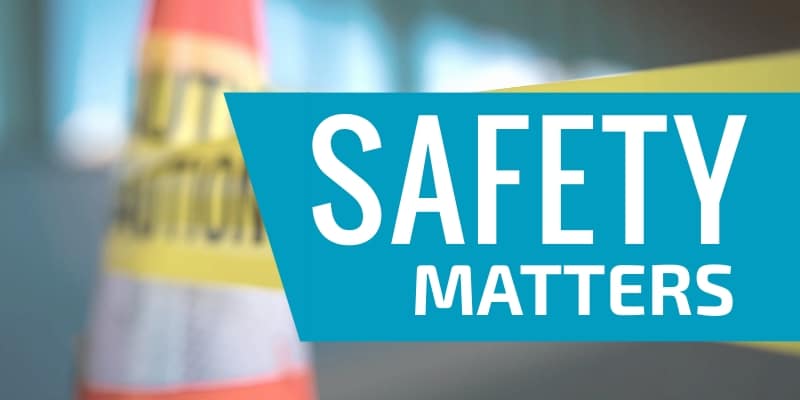 It’s vital for employees to feel comfortable in their job role and capable of performing workplace tasks effectively. However, comfort shouldn’t come at the cost of complacency.
It’s vital for employees to feel comfortable in their job role and capable of performing workplace tasks effectively. However, comfort shouldn’t come at the cost of complacency.
Being complacent on the job and ignoring safety hazards can carry significant consequences in the workplace—such as near-miss incidents, injuries and even fatalities. After all, just because your workplace is safe, doesn’t mean you don’t have to follow proper precautions. In fact, many safety incidents aren’t caused by unsafe conditions, but rather by careless acts or behaviors.
That’s why it’s crucial for you to play your part in combating complacency, keeping both yourself and others safe at work. Review this guidance to understand what workplace safety complacency is and how to prevent it.
 On Oct. 2, 2020, The U.S. Occupational Safety And Health Administration (OSHA) Issued Temporary Guidance For Compliance Safety And Health Officers (CHSOs), Easing Enforcement Of Fit-Testing Requirements Under The Respiratory Protection Standard For The Use Of Tight-Fitting Powered Air Purifying Respirators (PAPRs).
On Oct. 2, 2020, The U.S. Occupational Safety And Health Administration (OSHA) Issued Temporary Guidance For Compliance Safety And Health Officers (CHSOs), Easing Enforcement Of Fit-Testing Requirements Under The Respiratory Protection Standard For The Use Of Tight-Fitting Powered Air Purifying Respirators (PAPRs). On Sept. 22, 2020, The U.S. Department Of Transportation (DOT) Extended Its COVID-19 Drug And Alcohol Testing Guidance To Dec. 31, 2020. The Extended Guidance Allows Substance Abuse Professionals (SAPs) To Perform Remote Assessments And Evaluations And Lengthens The Requalification Timeline For Service Agents Through The End Of The Year.
On Sept. 22, 2020, The U.S. Department Of Transportation (DOT) Extended Its COVID-19 Drug And Alcohol Testing Guidance To Dec. 31, 2020. The Extended Guidance Allows Substance Abuse Professionals (SAPs) To Perform Remote Assessments And Evaluations And Lengthens The Requalification Timeline For Service Agents Through The End Of The Year. On Monday, Oct. 18, 2020, The Centers For Disease Control And Prevention (CDC) Officially Encouraged Passengers To Wear Masks While On Public Transportation. This Guidance Comes More Than Seven Months Into The COVID-19 Pandemic, And Many States And Transportation Providers—Especially Airlines—Already Enforce Mask Requirements.
On Monday, Oct. 18, 2020, The Centers For Disease Control And Prevention (CDC) Officially Encouraged Passengers To Wear Masks While On Public Transportation. This Guidance Comes More Than Seven Months Into The COVID-19 Pandemic, And Many States And Transportation Providers—Especially Airlines—Already Enforce Mask Requirements. On Wednesday, Oct. 21, 2020, The Centers For Disease Control And Prevention (CDC) Clarified What “Close Contact” Means As It Relates To COVID-19-Prevention Guidance.
On Wednesday, Oct. 21, 2020, The Centers For Disease Control And Prevention (CDC) Clarified What “Close Contact” Means As It Relates To COVID-19-Prevention Guidance. It’s vital for employees to feel comfortable in their job role and capable of performing workplace tasks effectively. However, comfort shouldn’t come at the cost of complacency.
It’s vital for employees to feel comfortable in their job role and capable of performing workplace tasks effectively. However, comfort shouldn’t come at the cost of complacency.